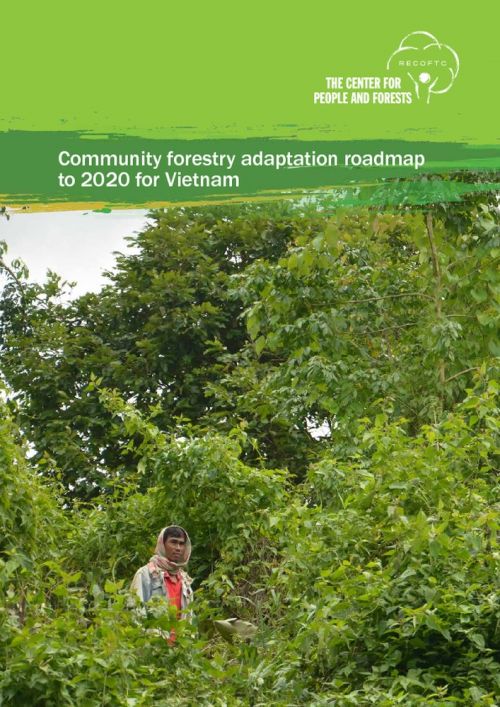APA 6th ed. Community Forestry Adaptation Roadmap to 2020 for Vietnam. (2014, November 1). Retrieved from https://www.recoftc.org/publications/0000200
MLA 8th ed. Community Forestry Adaptation Roadmap to 2020 for Vietnam. RECOFTC, 1 November 2014, https://www.recoftc.org/publications/0000200.
Chicago 17th ed. RECOFTC. 2014. "Community Forestry Adaptation Roadmap to 2020 for Vietnam." Published November 1, 2014. https://www.recoftc.org/publications/0000200.
Community Forestry Adaptation Roadmap to 2020 for Vietnam

Community forestry supports local level climate change adaptation by enhancing resilience in multiple ways: supporting livelihoods and income, increasing food security, leveraging social capital and knowledge, reducing disaster risks and regulating microclimates. However, adaptation planning has, by and large, not included community forestry as a viable climate change adaptation tool. To address this, RECOFTC – The Center for People and Forests has developed a set of roadmaps to help guide the meaningful inclusion of community forestry in climate change adaptation planning through the year 2020. To develop the roadmaps, RECOFTC – The Center for People and Forests conducted a desk-based literature review on the link between community forestry and climate change adaptation in the region, and in the selected countries. Based on the review, a ten-question interview template was drafted to gather primary data from experts, defined as practitioners, policy-makers and researchers with experience in community forestry and/or adaptation in the included countries. The information provided by these interviews informed the analysis and recommendation of these reports. In Vietnam, community based mangrove management and community forestry offer vital opportunities for adaptation to climate change for both coastal and inland communities. Mangrove forests play a critical role for coastal communities and marine ecosystems alike, protecting coastlines from storm surges, flooding and erosion. They also serve communities as fish nurseries and a source of timber. However mangrove ecosystems themselves are vulnerable to climate change, including temperature and precipitation changes, sea level rise and coastal flooding.

